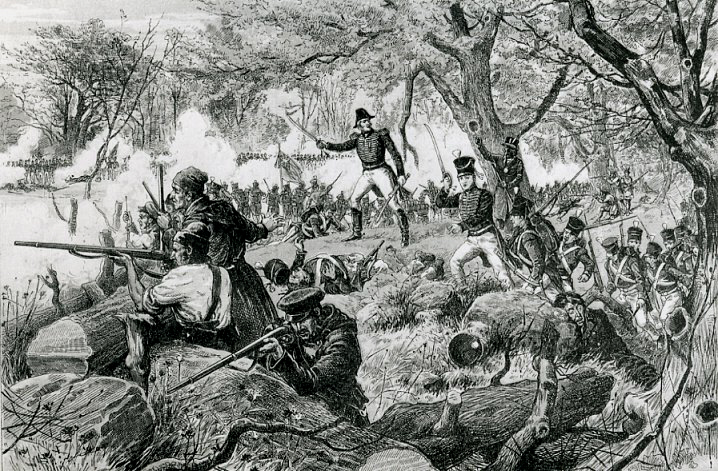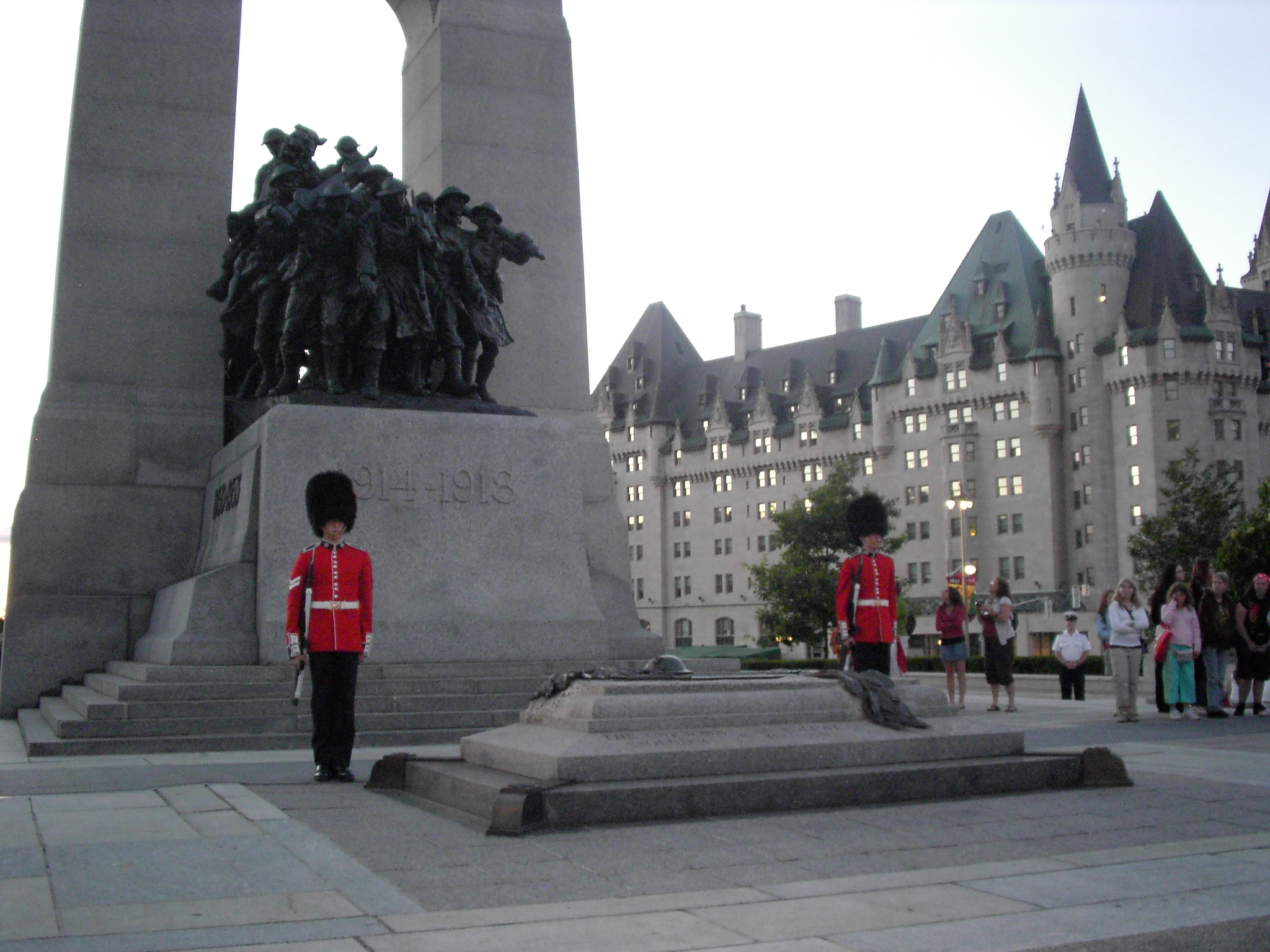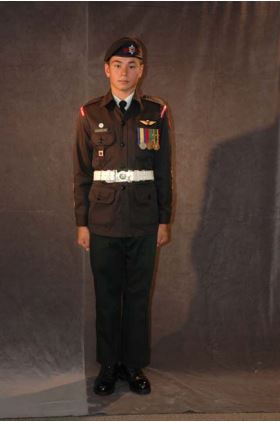|
42nd Field Artillery Regiment (Lanark And Renfrew Scottish), RCA
The 42nd Field Artillery Regiment (Lanark and Renfrew Scottish), RCA is a Canadian Army Reserve artillery regiment based in Pembroke, Ontario. It is part of the 4th Canadian Division's 33 Canadian Brigade Group. It was initially converted from the The Lanark and Renfrew Scottish Regiment to artillery in 1946. It includes the 35th Field Battery, RCA.Canadian Forces Publication A-DH-267-003 Insignia and Lineages of the Canadian Forces. Volume 3: Combat Arms Regiments. Lineage *Originated 5 October 1866 in Brockville, Ontario, as the 42nd "Brockville Battalion of Infantry" *Redesignated 1 December 1897 as the 42nd "Lanark and Renfrew" Battalion of Infantry *Redesignated 8 May 1900 as the 42nd Lanark and Renfrew Regiment *Redesignated 12 March 1920 as The Lanark and Renfrew Regiment *Redesignated 15 July 1927 as The Lanark and Renfrew Scottish Regiment *Redesignated 7 November 1940 as the 2nd (Reserve) Battalion, The Lanark and Renfrew Scottish Regiment *Redesignated 15 September 19 ... [...More Info...] [...Related Items...] OR: [Wikipedia] [Google] [Baidu] |
Canada
Canada is a country in North America. Its ten provinces and three territories extend from the Atlantic Ocean to the Pacific Ocean and northward into the Arctic Ocean, covering over , making it the world's second-largest country by total area. Its southern and western border with the United States, stretching , is the world's longest binational land border. Canada's capital is Ottawa, and its three largest metropolitan areas are Toronto, Montreal, and Vancouver. Indigenous peoples have continuously inhabited what is now Canada for thousands of years. Beginning in the 16th century, British and French expeditions explored and later settled along the Atlantic coast. As a consequence of various armed conflicts, France ceded nearly all of its colonies in North America in 1763. In 1867, with the union of three British North American colonies through Confederation, Canada was formed as a federal dominion of four provinces. This began an accretion of provinces and ... [...More Info...] [...Related Items...] OR: [Wikipedia] [Google] [Baidu] |
Atlantic Command (Canadian Army)
Atlantic Command was a formation of the Canadian Army created during the Second World War to strengthen and administer home defence facilities on Canada's Atlantic Coast. A second major function was to train reinforcements to be sent to the Canadian divisions in Europe. Most of those soldiers received and trained with their personal weapons in Camp Debert before being transported by train to Halifax where they embarked on troop ships that took them to Britain. Atlantic Command combined the pre-war Military District No. 6 (Prince Edward Island and Nova Scotia) with Military District No. 7 (New Brunswick) and Military District No. 5 (the eastern part of the Province of Quebec bordering the Gulf of Saint Lawrence). Extending the existing military cooperation among Canada, the Dominion of Newfoundland and the United Kingdom, Atlantic Command also controlled Canadian personnel stationed in Newfoundland. Composition *Halifax Fortress **1st (Halifax) Coast Regiment, Royal Canadian Ar ... [...More Info...] [...Related Items...] OR: [Wikipedia] [Google] [Baidu] |
History Of The Canadian Army
The history of the Canadian Army, began when the title first came into official use in November 1940, during the Second World War, and is still used today. Although the official titles, Force Mobile Command, and later Land Force Command, were used from February 1968 to August 2011, "Canadian Army" continued to be unofficially used to refer to the ground forces of the Canadian Armed Forces, much as it has been from Confederation in 1867 to the present. The term was often even used in official military publications, for example in recruiting literature and the official newspaper of the Canadian Forces, ''The Maple Leaf''. On August 16, 2011, the title, "Canadian Army", was officially restored, once again bringing the official designation in line with common and historical usage. Formation Prior to Canadian Confederation in 1867, defence for the colonies that comprise present-day Canada was dependent on the armies of colonial powers. The military of New France (1608–1763) was de ... [...More Info...] [...Related Items...] OR: [Wikipedia] [Google] [Baidu] |
Military History Of Canada
The military history of Canada comprises hundreds of years of armed actions in the territory encompassing modern Canada, and interventions by the Canadian military in conflicts and peacekeeping worldwide. For thousands of years, the area that would become Canada was the site of sporadic intertribal conflicts among Aboriginal peoples. Beginning in the 17th and 18th centuries, Canada was the site of four colonial wars and two additional wars in Nova Scotia and Acadia between New France and New England; the conflicts spanned almost seventy years, as each allied with various First Nation groups. In 1763, after the final colonial war—the Seven Years' War—the British emerged victorious and the French civilians, whom the British hoped to assimilate, were declared "British Subjects". After the passing of the Quebec Act in 1774, giving the Canadians their first charter of rights under the new regime, the northern colonies chose not to join the American Revolution and remained loyal to ... [...More Info...] [...Related Items...] OR: [Wikipedia] [Google] [Baidu] |
49th Field Artillery Regiment, RCA
49th Field Artillery Regiment, RCA, is a Canadian Forces Primary Reserve regiment based in Sault Ste. Marie, Ontario. The regiment is part of 4th Canadian Division's 33 Canadian Brigade Group. Allocated batteries * 30th Field Battery, RCA * 148th Field Battery, RCA Lineage 49th Field Artillery Regiment, RCA * Originated on 15 November 1913, in Sault Ste. Marie, Ontario, when an eight-company infantry regiment, City Corps was authorized to be formed. * Redesignated on 10 February 1914, as the ''51st Regiment Rifles''. * Redesignated on 16 February 1914, as the ''51st Regiment (The Soo Rifles)''. * Redesignated on 15 August 1914, as the ''51st Regiment (Soo Rifles)''. * Redesignated on 1 May 1920, as ''The Soo Rifles''. * Redesignated on 1 September 1923, as ''The Sault Ste. Marie Regiment''. * Amalgamated on 15 December 1936, with the Headquarters and "A" Company of The Algonquin Regiment and redesignated ''The Sault Ste. Marie and Sudbury Regiment (MG)''. * Redesignated ... [...More Info...] [...Related Items...] OR: [Wikipedia] [Google] [Baidu] |
30th Field Artillery Regiment, RCA
, colors = The guns of ''Royal Regiment of Canadian Artillery, The Royal Regiment of Canadian Artillery'' themselves , colors_label = Colours , march = * Slow march: ''Royal Artillery Slow March'' * Quick march (dismounted parades): ''British Grenadiers'' * Trot past: ''Keel Row'' , mascot = , anniversaries = * 27 September 1855: ''2nd "Ottawa" Battery'' authorized (date used by ''30 Fd Regt RCA'' as its unit anniversary) * ''30 Fd Regt RCA'' originated in Ottawa on 9 May 1905 when a General Order, Special General Order (GO) authorized the forming of the ''8th Brigade of Field Artillery, CA'' from the ''2nd "Ottawa" Battery'' and the ''23rd Battery'' , equipment = M101 howitzer#Variants, 105 mm Howitzer, C3 , equipment_label = Weapon system , battles = , battles_label = , battle_honours ... [...More Info...] [...Related Items...] OR: [Wikipedia] [Google] [Baidu] |
Royal Regiment Of Scotland
The Royal Regiment of Scotland is the senior and only Scottish line infantry regiment of the British Army Infantry. It consists of three regular (formerly five) and two reserve battalions, plus an incremental company, each formerly an individual regiment (with the exception of the former first battalion (now disbanded and reformed into the 1st Bn Rangers based in Northern Ireland), which is an amalgamation of two regiments). However, three regular battalions maintain their former regimental pipes and drums to carry on the traditions of their antecedent regiments. History As part of restructuring in the British Army, the Royal Regiment of Scotland's creation was announced by the Secretary of State for Defence, Geoff Hoon in the House of Commons on 16 December 2004, after the merger of several regiments and the reduction in total regular infantry battalions from 40 to 36 was outlined in the defence white paper, '' Delivering Security in a Changing World'', several months ... [...More Info...] [...Related Items...] OR: [Wikipedia] [Google] [Baidu] |
240th Battalion, CEF
The 240th Battalion, CEF was a unit in the Canadian Expeditionary Force during the First World War. Based in Renfrew, Ontario, the unit began recruiting in the Spring of 1916 in the counties of Lanark, Renfrew, and Frontenac. After sailing to England in May 1917, the battalion was absorbed into the 156th (Leeds and Grenville) Battalion, CEF and the 6th and 7th Reserve Battalions in June, 1917. The 240th Battalion, CEF had one Officer Commanding: Lieut-Col. E. J. Watt.Meek, John F. ''Over the Top! The Canadian Infantry in the First World War.'' Orangeville, Ont.: The Author, 1971. The battalion is perpetuated by the 42nd Field Artillery Regiment (Lanark and Renfrew Scottish), RCA The 42nd Field Artillery Regiment (Lanark and Renfrew Scottish), RCA is a Canadian Army Reserve artillery regiment based in Pembroke, Ontario. It is part of the 4th Canadian Division's 33 Canadian Brigade Group. It was initially converted from .... References External linksNominal roll of bat ... [...More Info...] [...Related Items...] OR: [Wikipedia] [Google] [Baidu] |
130th Battalion (Lanark And Renfrew), CEF
The 130th (Lanark and Renfrew) Battalion, CEF was a unit in the Canadian Expeditionary Force during the First World War. Based in Perth, Ontario, the unit began recruiting in late 1915 in Lanark and Renfrew Counties. After sailing to England in September 1916, the battalion was absorbed into the 12th Reserve Battalion on October 6, 1916. The 130th Battalion, CEF had one Officer Commanding: Lieut-Col. J. E. de Hertel. 130th Battalion (Lanark and Renfrew), CEF, is perpetuated by the 42nd Field Artillery Regiment (Lanark and Renfrew Scottish), RCA The 42nd Field Artillery Regiment (Lanark and Renfrew Scottish), RCA is a Canadian Army Reserve artillery regiment based in Pembroke, Ontario. It is part of the 4th Canadian Division's 33 Canadian Brigade Group. It was initially converted from ....Canadian Forces Publication A-DH-267-003 Insignia and Lineages of the Canadian Forces. Volume 3: Combat Arms Regiments. References *Meek, John F. ''Over the Top! The Canadian Infantry ... [...More Info...] [...Related Items...] OR: [Wikipedia] [Google] [Baidu] |
Arnprior
Arnprior is a town in Renfrew County, in the eastern portion of Southern Ontario, Canada. It is located west of Downtown Ottawa, at the confluence of the Madawaska River and the Ottawa River in the Ottawa Valley. Arnprior has experienced significant growth in populations with the widening of the 417 Provincial Highway to four lanes. The town experienced an increase in population by 8.4% from 2011 to 2016, at which time its population was 8,795. The town is a namesake of Arnprior, Scotland, and is known for lumber, hydro power generation, aerospace, farming and its proximity to the National Capital Region. History The land occupied by what is now called Arnprior is part of the traditional territory of the Algonquin nation of indigenous North Americans. The first European explorers, led by Samuel de Champlain, first visited the area in May 1613. In 1823, a surveyed block was ceded to Archibald McNab and named McNab Township. McNab had approval from the Family Compact to t ... [...More Info...] [...Related Items...] OR: [Wikipedia] [Google] [Baidu] |
Royal Canadian Army Cadets
The Royal Canadian Army Cadets (RCAC; french: Cadets royaux de l’Armée canadienne) is a national Canadian youth program sponsored by the Canadian Armed Forces and the civilian Army Cadet League of Canada. Under the authority of the National Defence Act, the program is administered by the Canadian Armed Forces and funded through the Department of National Defence. Additionally, the civilian partner of the Royal Canadian Army Cadets, the Army Cadet League of Canada, also ensures financial, accommodations and transportation support for RCAC programs and services at a community level. Many Royal Canadian Army Cadet corps receive logistical assistance and administrative support from their affiliated Regular Force or Reserve Force unit. While cadets may wear the badges and accoutrements of their affiliated unit, cadets are not members of the Canadian Armed Forces. With roots in the early drill associations authorized in 1861, Royal Canadian Army Cadets is Canada's oldest youth pr ... [...More Info...] [...Related Items...] OR: [Wikipedia] [Google] [Baidu] |





